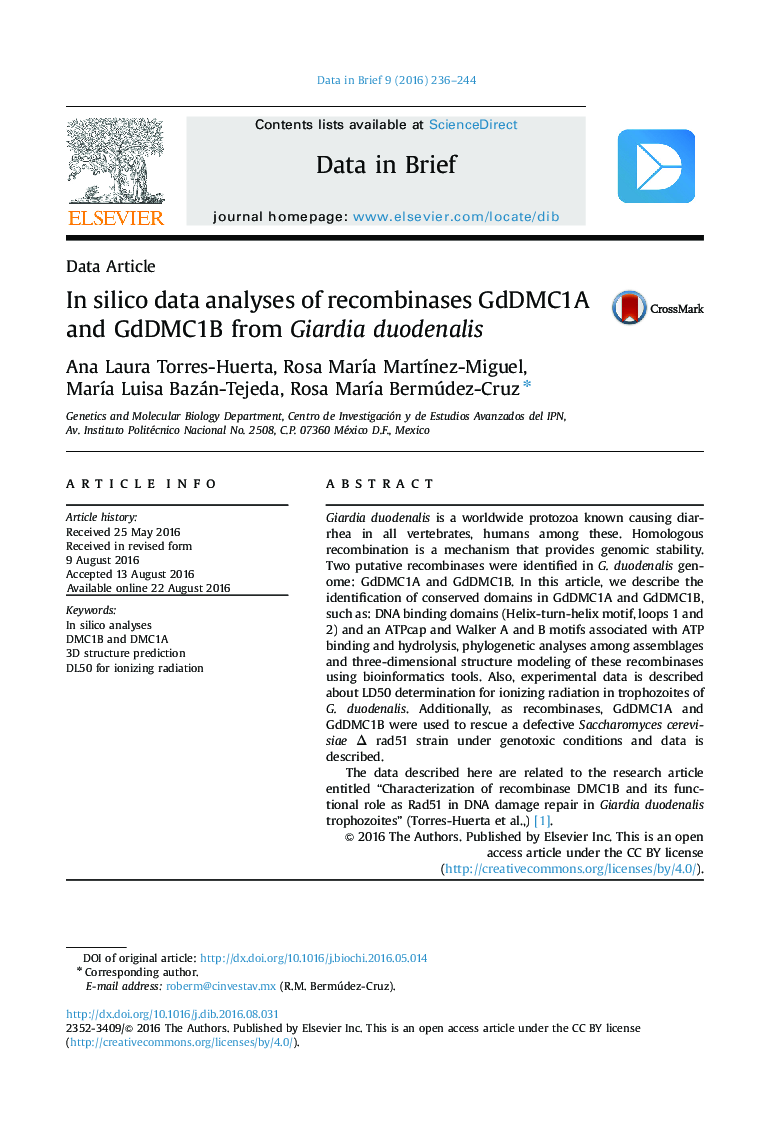| Article ID | Journal | Published Year | Pages | File Type |
|---|---|---|---|---|
| 4765504 | Data in Brief | 2016 | 9 Pages |
Giardia duodenalis is a worldwide protozoa known causing diarrhea in all vertebrates, humans among these. Homologous recombination is a mechanism that provides genomic stability. Two putative recombinases were identified in G. duodenalis genome: GdDMC1A and GdDMC1B. In this article, we describe the identification of conserved domains in GdDMC1A and GdDMC1B, such as: DNA binding domains (Helix-turn-helix motif, loops 1 and 2) and an ATPcap and Walker A and B motifs associated with ATP binding and hydrolysis, phylogenetic analyses among assemblages and three-dimensional structure modeling of these recombinases using bioinformatics tools. Also, experimental data is described about LD50 determination for ionizing radiation in trophozoites of G. duodenalis. Additionally, as recombinases, GdDMC1A and GdDMC1B were used to rescue a defective Saccharomyces cerevisiae Î rad51 strain under genotoxic conditions and data is described.The data described here are related to the research article entitled “Characterization of recombinase DMC1B and its functional role as Rad51 in DNA damage repair in Giardia duodenalis trophozoites” (Torres-Huerta et al.,) [1].
